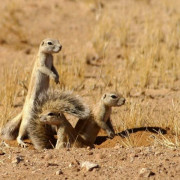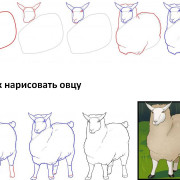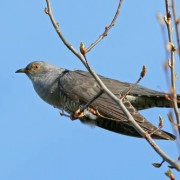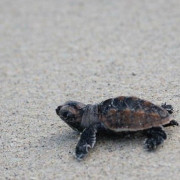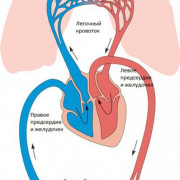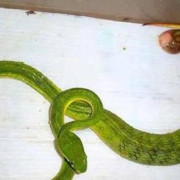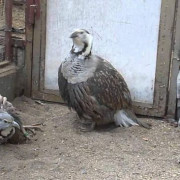Карнозавр фильмНовостная лента
Содержание:
История изучения

Реконструкция кронозавра от Гарвардского университета.
Первой находкой был фрагмент с шестью коническими зубами, найденный Эндрю Кромби в в Хьюгенденде (, ) в раннемеловой формации Тулбук, и переданный им в Квинслендский музей. Спустя 25 лет, в этот образец был описан Х. Лонгманом как нового вида Kronosaurus queenslandicus. В 1929 году там же были найдены дополнительные ископаемые остатки — часть плавника, плечевая кость и частичный череп. Было ясно, что эти кости принадлежат очень крупному плиозавру. В 1931—1932 годах экспедиция (США) заполучила в районе и Грампиан Вэлли в Квинсленде почти полный, но разрушенный кронозавра и часть его . Остатки относились к формации Валлумбилла возраста. Скелет был небрежно добыт с использованием динамита и именно поэтому был сильно разрушен. Затем его вывезли в США.
В 1950-х годах в музее Гарвардского университета под руководством известного палеонтолога Альфреда Ш. Ромера был реконструирован полный скелет кронозавра. Скелет пришлось собирать по кусочкам, дополняя отсутствующие части с помощью пластика — на весь процесс из-за финансовых ограничений ушло не менее 20 лет. В итоге получился плиозавр с торпеодообразным туловищем, мощными плавниками и черепом длиной около 3 метров (270 см). Длина смонтированного скелета составила 12,8 метра. В таком виде кронозавр прославился, став персонажем научно-популярных книг и даже фантастики. Его нередко описывали как «морского Ти-рекса», «царя древних морей» и т. д.

Южноамериканский Kronosaurus boyacensis.
Между тем, в 1977 году крестьянин из Моникире обнаружил огромный камень во время распахивания своего поля, о котором он в дальнейшем сообщил как о возможной окаменелости. Раскопки показали, что это был новый скелет кронозавра, относимый к раннемеловым (аптскии) отложениям Колумбии. Этот вид (Kronosaurus boyacensis), описанный в 1992 году, отличался от реконструированного гарвардского образца меньшими размерами и другими пропорциями тела и черепа. В целом, он оказался больше похожим на других плиозавров — с коротким, широким (а не торпедообразным) телом и низким черепом. Следует отметить, что и череп гарвардского кронозавра исходно восстановили как очень низкий, обтекаемый, «почти пулеобразный». Но такая форма не очень впечатляла авторов, и к черепу добавили сагиттальный гребень, использовав найденный внутри черепа кусок кости.
Последующее изучение гарвардского образца и обнаруженных в последние годы дополнительных фрагментов из Австралии показало, что истинная длина тела гарвардского образца достигала приблизительно 10,5—10,9 метров, а не 12,8 метров. Примерно таких же размеров был и колумбийский кронозавр. Хотя кронозавр оказался меньшего размера, чем изначально предполагали учёные, этот плиозаврид всё же входил в число крупнейших хищников в истории Земли.
Description
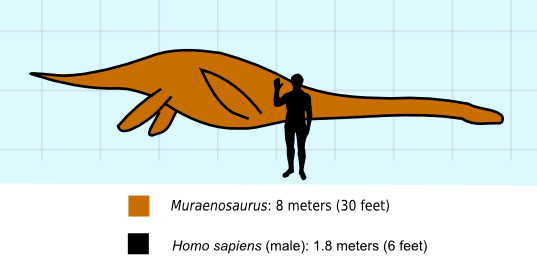 M. leedsi with a human to scale
M. leedsi with a human to scale
Muraenosaurus was roughly 5 to 6 meters in length and owed roughly half of its body size to its long neck. The plesiosaur had 66 pre-sacral vertebrae; 44 of which were cervical. Starting from the base of the skull and moving posteriorly the elongate and the neural spines broaden. This may be indicative of increased muscle attachment towards the base of the neck. There is also a gradual flattening and reduction of the zygapohesis until about the 30th vertebra where all traces of the platform are gone. Posterior to the 44 cervical vertebrae, Muraenosaurus had 3 pectoral vertebrae and 19 . The pectoral vertebrae resemble the terminal cervical vertebrae but display a broadened face of the centrum and a slight posterior incline in the neural spines. In the dorsal vertebrae the rib has been raised onto the . The neural spines have elongated anteroposteriorly and compressed vertically.
The in Muraenosaurus is broader than in most plesiosaurs and helped to situate the animal as a member of Cryptoclididae. The reach widths of nearly 14 inches. The forelimb is compressed mediolaterally when compared to the hind limb as well as limbs of other plesiosaurs. This compression is represented in the of Muraenosaur limbs. The aspect ratio of the hind limbs is much greater than that of the fore limbs, representing a longer and more slender form. The high aspect ratio in the forelimbs may have been used for increasing maneuverability at some cost to the animal’s endurance.
Classification
M. beloclis fossils
When Harry Seeley first described Muraenosaurus it was thought to belong to Elasmosauridae instead of Cryptoclididae. Muraenosaurs and elasmosaurs share a plesiosauromorph body type typified by having a small head at the end of a long neck. Like elasmosaurids, Muraenosaurus has a long neck. Of the 66 presacral vertebrae in Muraenosaurus, 44 of them are cervical. It was initially believed that this innovation leads to a largely flexible neck and a relatively short and sturdy body. More recent research has shown that while mobile, the neck of plesiosauromorphs was not as flexible as previously thought. The head of Muraenosaurus is also very small compared to both its neck and body length, measuring only about 37 centimetres (15 in) long. Both of these traits are common in elasmosaurids which led to the initial diagnosis of muraenosaurs in the family Elasmosauridae. However, this is actually a case of convergent evolution between cryptoclidids and elasmosaurs.
The clade of cryptoclidids creates a unique tree in relation to the paleomorphology of discovered specimens. For example, within cryptocleidoidae there are short necked plesiosaurs such as Kimmerosaurus as well as the long necked Muraenosaurus. The defining features of Cryptocleidoidia include a low fin aspect ratio, a wide rounded interpterygoid vacuity, and extreme specialization of the cheek region. The interpterygoid vacuity is completely absent in elasmosaur species but well represented in cryptoclidids, including Muraenosaurus. The aspect ratio of both the fore and hind limbs of Muraenosaurus is far lower than the aspect ratio of elasmosaur specimens. The fore limbs especially resemble the flippers of Pliosauridae, an extinct group of less elongate marine reptiles that shared the seas with plesiosaurs, more than they resemble the typical plesiosaur morphology. Cryptoclidus, another cryptoclidid plesiosaurimorph, shares this trait with Muraenosaurus.
Примечания
- ↑ McHenry, Colin R. «Devourer of Gods: The Palaeoecology of the Cretaceous Pliosaur Kronosaurus Queenslandicus.» The University of Newcastle Australia, Apr. 2009. Web.
- ↑
- ↑
- Hampe O. 1992. Ein großwüchsiger Pliosauride (Reptilia: Plesiosauria) aus der Unterkreide (oberes Aptium) von Kolumbien. Courier Forschungsinstitut Senckenberg 145: 1-32.
- ↑ davidpeters1954. . The Pterosaur Heresies (5 марта 2014). Дата обращения 1 июня 2016.
- . palaeos.com. Дата обращения 1 июня 2016.
- . palaeos.com. Дата обращения 1 июня 2016.
- ↑
- Romer AS, Lewis AD. 1959. A mounted skeleton of the giant plesiosaur Kronosaurus. Breviora 112: 1-15.
- ↑ Kear BP. 2003. Cretaceous marine reptiles of Australia: a review of taxonomy and distribution. Cretaceous Research 24: 277–303.
- Massare JA. 1997. Introduction — faunas, behaviour and evolution. In: Callaway JM, Nicholls EL. (Eds.), Ancient Marine Reptiles. Academic Press, San Diego, pp. 401-421.
- Sachs S. 2005. Tuarangisaurus australis sp. nov. (Plesiosauria: Elasmosauridae) from the Lower Cretaceous of northeastern Queensland, with additional notes on the phylogeny of the Elasmosauridae. Memoirs of the Queensland Museum. 50 (2): 425-440.
- Kear, B. P. 2007. Taxonomic Clarification of the Australian Elasmosaurid Genus Eromangasaurus, with Reference to Other Austral Elasmosaur Taxa. Memoirs of the Queensland Museum. 27 (1): 241-246.
- c=AU; co=Queensland Government; ou=Queensland Museum. . www.qm.qld.gov.au. Дата обращения 1 июня 2016.
DinoZavro.ru — Энциклопедия динозавров
| Главная | ||
| Классификация динозавров |
||
| Игры с динозаврами |
||
— Игра с динозаврами: Дино в поисках любви |
||
| — Игра с динозаврами: Дино — Дракоша |
||
| — Игра с динозаврами: Занимательные динозавры |
||
| — Игра с динозаврами: Бег пещерного человечека |
||
| — Игра с динозаврами: Динозавры малыши |
||
| — Игра с динозаврами: Динозаврик и пузырьки |
||
| — Игра с динозаврами: Фред — первобытный человек |
||
| — Игра с динозаврами: Биммин |
||
| Динозавры от А до Я |
||
| А | ||
| Абелизавр | ||
| Абидозавр | ||
| Абриктозавр | ||
| Аброзавр | ||
| Авацератопс | ||
| Авимим | ||
| Австраловенатор | ||
| Агатаумас | ||
| Агустиния | ||
| Адазавр | ||
| Адамантизавр | ||
| Адеопаппозавр | ||
| Акрокантозавр | ||
| Аламозавр | ||
| Алетопелта | ||
| Алиорам | ||
| Аллозавр | ||
| Альбертозавр | ||
| Альтиспинакс | ||
| Амаргазавр | ||
| Аммозавр | ||
| Ампелозавр | ||
| Анатозавр | ||
| Анкилозавр | ||
| Анкицератопс | ||
| Антеозавр | ||
| Анхизавр | ||
| Апатозавр | ||
| Арагозавр | ||
| Аргентинозавр | ||
| Археоптерикс | ||
| Ахилобатор | ||
| Б | ||
| Балаур |
||
Баваризавр |
||
Барилий |
||
| Батигнат | ||
| Барионикс | ||
Барозавр |
||
| Батигнат | ||
| Бейпяозавр | ||
| Бистахиеверсор | ||
| Брахилофозавр | ||
| Брахиозавр | ||
| Буитрераптор | ||
| В | ||
| Велоцираптор | ||
| Вулканодон | ||
| Г | ||
| Гадрозавр | ||
| Газозавр | ||
| Галлимим | ||
| Герреразавр | ||
| Гиганотозавр | ||
| Гигантораптор | ||
| Гипселоспин | ||
| Гипсилофодон | ||
| Гуанлонг | ||
| Д | ||
| Дакозавр | ||
| Дасплетозавр | ||
| Дейноних | ||
| Дельтадромей | ||
| Десматозух | ||
| Дикреозавр | ||
| Дилофозавр | ||
| Диметродон | ||
| Диплодок | ||
| Дракорекс | ||
| Дриптозавр | ||
| Дромеозавр | ||
| Е | ||
| Египтозавр | ||
| Ж | ||
| Жираффатитан | ||
| З | ||
| Заврорнитоид | ||
| Залмоксес | ||
| Занабазар | ||
| Зауролоф | ||
| Зуницератопс | ||
| Зупайзавр | ||
| Зухомим | ||
| И | ||
| Игуанодон | ||
| Ихтиозавр | ||
| К | ||
| Камаразавр | ||
| Камптозавр | ||
| Карнотавр | ||
| Кархародонтозавр | ||
| Каудиптерикс | ||
| Кентрозавр | ||
| Килеск | ||
| Коауилацератопс | ||
| Коауилацератопс | ||
| Компсогнат | ||
| Конфуциусорнис | ||
| Коритозавр | ||
| Криолофозавр | ||
| Кронозавр | ||
| Л | ||
| Ламбеозавр | ||
| Лаплатазавр | ||
| Лептоклейд | ||
| Лептоцератопс | ||
| Лесотозавр | ||
| Лиоплевродон | ||
| Лонгисквама | ||
| Люфенгозавр | ||
| М | ||
| Майязавр | ||
| Максакализавр | ||
| Маменьчизавр | ||
| Мапузавр | ||
| Маразух | ||
| Массоспондил | ||
| Мегалозавр | ||
| Мегараптор | ||
| Медузацератопс | ||
| Микрораптор | ||
| Минми | ||
| Моноклон | ||
| Мононихус | ||
| Мусзавр | ||
| Муттабурразавр | ||
| Н | ||
| Нанотиран | ||
| Наншиунгозавр | ||
| Неукензавр | ||
| Нигерзавр | ||
| Никтозавр | ||
| Нодозавр | ||
| О | ||
| Овираптор | ||
| Орнитозух | ||
| Орнитолест | ||
| Орнитомим | ||
| Охоцератопс | ||
| П | ||
| Паразауролоф | ||
| Паралититан | ||
| Патагозавр | ||
| Пахиринозавр | ||
| Пахицефалозавр | ||
| Педопенна | ||
| Пелеканимим | ||
| Платеозавр | ||
| Платиптеригий | ||
| Плиозавр | ||
| Престозух | ||
| Пробактрозавр | ||
| Протархеоптерикс | ||
| Протоавис | ||
| Протоцератопс | ||
| Процератозавр | ||
| Пситаккозавр | ||
| Птеродактиль | ||
| Р | ||
| Раджазавр | ||
| Рамфоринх | ||
| Рапетозавр | ||
| Рапторекс | ||
| С | ||
| Сальтазавр | ||
| Сегнозавр | ||
| Сейсмозавр | ||
| Сейтаад | ||
| Синозауроптерикс | ||
| Синорнитозавр | ||
| Скипионикс | ||
| Сколозавр | ||
| Скутеллозавр | ||
| Спинозавр | ||
| Спинофорозавр | ||
| Ставрикозавр | ||
| Стегозавр | ||
| Стиракозавр | ||
| Струтиомим | ||
| Сцелидозавр | ||
| Т | ||
| Тава | ||
| Таларурус | ||
| Таниколагрей | ||
| Таньюраптор | ||
| Тарбозавр | ||
| Темнодонтозавр | ||
| Тенонтозавр | ||
| Теризинозавр | ||
| Техацефал | ||
| Тилозавр | ||
| Тиранозавр | ||
| Торвозавр | ||
| Торозавр | ||
| рицератопс | ||
| Троодон | ||
| У | ||
| Уненлагия | ||
| Уранозавр | ||
| Ф | ||
| Фалкарий | ||
| Фукурираптор | ||
| Х | ||
| Хагрифус | ||
| Хазмозавр | ||
| Хайнозавр | ||
| Ц | ||
| Целофизис | ||
| Целурозаврав | ||
| Целюр | ||
| Цератозавр | ||
| Цетиозавр | ||
| Ш | ||
| Шонизавр | ||
| Э | ||
| Эвоплоцефал | ||
| Эдафозавр | ||
| Эдмонтозавр | ||
| Эораптор | ||
| Эокурсор | ||
| Эпидексиптерикс | ||
| Эрликозавр | ||
| Эупаркерия | ||
| Ю | ||
| Ютараптор | ||
| Я | ||
| Янхуанозавр | ||
| Статьи о динозаврах |
||
| Динозавры — новая ветвь эволюции |
||
| Зубы динозавров |
||
| Окаменелости | ||
| Ожившие ископаемые |
||
| Когти динозавров |
||
| Танки мезозойской эры |
||
| Динозавры — окончание эпохи |
||
| Архейская эра |
||
| Протерозойская эра |
||
| Палеозойская эра |
||
| Мезозойская эра |
||
| триасовый период |
||
| юрский период |
||
| меловой период |
||
| все динозавры |
||
| словарь терминов |
||
| F.A.Q. о динозаврах |
Палеоэкология
Кронозавр был свирепым и крайне успешным южных полярных морей, находящимся на вершине пищевой цепи и даже ограничивавшим расселение крупных раннемеловых , которые могли быть потенциальными конкурентами по крайней мере для молодых кронозавров.

Кронозавр, поймавший вулунгазавра.
Исходя из строения черепа, относительно небольшая жертва, вероятно, являлась важным компонентом рациона кронозавров, хотя некоторые особенности краниальной анатомии позволяли им охотиться и на относительно крупную добычу при ее наличии. Некоторые из этих признаков могут представлять собой эволюционные адаптации к строгим и противоречащим друг-другу механическим требованиям для питания как мелкой, так и крупной добычей. Вероятно, основные жертвы кронозавров входили в весовой диапазон от 1 до 3000 кг, как и у современных косаток, в отличие от кронозавров, охотящихся группами.
Содержимое желудка известных образцов кронозавров включает в себя остатки небольшого , крупного эласмозаврида, большой акулы и маленькой морской черепахи, что в сумме говорит о том, что кронозавр успешно расчленял пищевые объекты, которые он не был способен проглотить целиком. Кроме того, известен череп австралийского (вулунгазавра Woolungasaurus glendowerensis) Альбского возраста, носящий на себе предполагаемые следы от зубов кронозавра. Аналогичные отметины известны на черепе одного из молодых кронозавров, что говорит о том, что им не был чужд каннибализм. Ископаемые остатки неидентифицированного гигантского кальмара были найдены в том же регионе, что и кронозавр; возможно, кронозавры время от времени питались ими точно также, как и другие плиозавры, хотя на данный момент этому нет прямых доказательств. Большой интерес вызывает находка черепа молодого кронозавра (образец QM F52279), ассоциируемая с позвонками крупной акулы, приблизительно равной ему по длине. Было предложено, что эта находка демонстрирует трофические взаимодействия и молодой кронозавр мог погибнуть, подавившись акулой. Но с другой стороны, позвонки акулы находятся не непосредственно в пасти кронозавра (которая не сохранилась), а в области его глазниц, что может говорить о том, что эта ассоциация может быть вызвана факторами, а не результатами трофического взаимодействия.
Не исключено, что южные моря раннемелового времени ( — яруса, около 100—120 миллионов лет назад) были довольно холодными. Некоторые авторы не исключают даже существование там . Кронозавры, вероятно, нападали на добычу из глубины, на что указывает плоский череп и, возможно, слегка направленные вверх .
Paleobiology
Habitat
Muraenosaurus was initially discovered in the Oxford Clay which represents an ancient sea that was both shallow, with an average depth less than 50 meters, and warm (20 °C). The Oxford Clay deposits are found in southern England and parts of France. The sea was abundant with nutrients and light filtered easily through the shallow water to create a highly productive ecosystem. The sea floor was littered with , , and while the pelagic zone was home to a wide variety of species from marine reptiles to teleosts. The Oxford Clay was so productive that over 100 genera have been recovered from the sediment.
Diet and predation

Restoration of two M. leedsi
Muraenosaurus’ role in the ecosystem is probably more comparable to elasmosaurs than other cryptoclidids due to the plesiosauromorph body plans shared between elasmosaurs and muraenosaurs. Cryptoclidids have varying morphology and it is difficult to assess their ecological role as a collective unit. Long necked plesiosaurs have been discovered with varying contents lithified within their stomachs which give some indication of what Muraenosaurus may have been eating. Preferred prey types seem to be fish and . In order to exploit such different prey species, plesiosaurs would need multiple different feeding strategies.

Side view of M. leedsi
Initially, long necked plesiosaurs were thought to be strictly fish eaters due to their conical teeth, a shared trait with modern . It was proposed that plesiosaurimophs would swim with a straight neck and attack fishes. The straight neck would have been used in order to avoid creating drag by arching its neck upward into the water column. Additionally, some researchers have proposed that by swimming with its head directly in front of its body, plesiosaurs would be able to reach pelagic fishes before they felt the change in water pressure caused by the large body of the plesiosaur. Essentially, the head would precede the pressure difference. It is also proposed that species like Muraenosaurus fed upon benthic fishes by floating above them and reaching its head down into the benthos. Plesiosauromorphs may also have employed a strategy called benthic grazing where they would harvest relatively immobile species such as cephalopods from the sea floor. Gastroliths have often been found within the stomachs of extinct marine reptiles and have been associated with the plesiosauromorph body type. One of the proposed uses for gastroliths is the grinding of tough, shelled foods like cephalopods.
The food chain did not stop at the plesiosaurimorphs. The oceans in the were dominated by pliosaurs, apex predators that would have preyed upon species like Muraenosaurus. Pliosaurs were not the only animals that would have fed on Muraenosaurus though. Evidence of this comes from several cases of shark teeth being found with plesiosaurimorph specimens. However it is not certain if the specimens were alive when attacked or whether sharks were feeding on carcasses of deceased plesiosaurimorphs. The shredding teeth of sharks indicates that perhaps they were scavengers or and that they only fed upon dead plesiosaurs.Muraenosaurus was an important piece of the ecosystem both as a carnivore and as a source of food to other species.

Plesiosaur gastroliths
Gastroliths and Buoyancy
have been a common find among the stomach contents of extinct marine reptiles. Their occurrence has led to two main hypotheses regarding the significance of the rocks. The first proposed usage, as described above, was to crush hard shelled food engulfed by the animal. The second hypothesis is that gastroliths were swallowed in order to help maintain controllable within the water column. Modeling of Cryptoclidus body types has indicated that the use of gastroliths as is unrealistic. In order to effect the animal’s buoyancy, a Muraenosaur would have to consume over 10% of its body mass in stones. Observed masses of stone collected from plesiosaur stomachs are far lower than the modeled mass required to effect buoyancy. However, from the modeling a new possibility emerged and that is that gastroliths may have helped prevent rolling in animals like Muraenosaurus. Models have indicated that not only do stones reduce pivoting at depth but it is also possible they dampened the ossilations in a plesiosaur’s neck, helping provide stability to counter underwater currents.
References
- ^ Seeley, HG. 1874. On Murænosaurus Leedsii, a Plesiosaurian from the Oxford Clay. Part I. Quarterly Journal of the Geological Society 30: 197-208.
- ^ Wilhelm BC. 2010. A New Partial Skeleton of a Cryptocleidoid Plesiosaur from the Upper Jurassic Sundance Formation of Wyoming. Journal of Vertebrate Paleontology , 30, 6, 1736-1742.
- ^ Muraenosaurus? Reedii, Sp. Nov. and Tricleidus? Laramiensis Knight, American Jurassic Plesiosaurs. The Journal of Geology, 20, 4, 344-352.
- O’Keefe FR, and Wahl W. (2003). «Current taxonomic status of the plesiosaur Pantosaurus striatus from the Upper Jurassic Sundance Formation, Wyoming». Paludicola. 4 (2): 37–46.
- ^ Richards, CD. 2011. Pleisiosaur body shape and its impact on hydrodynamic properties. Huntington, WV: Marshal University Libraries
- ^ O’Keefe FR. 2001. Ecomorphology of plesiosaur flipper geometry. Journal of Evolutionary Biology, 14, 6, 987-991
- ^ O’Keefe, FR. 2001. A cladistics analysis and taxonomic revision of the Plesiosauria (Reptilia: Sauropterygia). Helsinki: Finnish Zoological and Botanical Pub. Board
- ^ Zammit M. 2008. Elasmosaur (Reptilia: Sauropterygia) neck flexibility: Implications for feeding strategies. Comparative Biochemistry and Physiology Part A: Molecular & Integrative Physiology , 150, 2, 124-130.
- Palmer, D., ed. (1999). The Marshall Illustrated Encyclopedia of Dinosaurs and Prehistoric Animals. London: Marshall Editions. p. 75. ISBN 1-84028-152-9.
- Andrews, CW. 1913. A descriptive catalogue of the Marine Reptiles of the Oxford Clay, Part II. British Museum (Natural History). pp.205pp.
- O’Keefe FR. 2002. The evolution of plesiosaur and pliosaur morphotypes in the Plesiosauria (Reptilia: Sauropterygia). Paleobiology, 28, 1, 101-112
- ^ Martill DM. 1994. The trophic structure of the biota of the Peterborough Member, Oxford Clay Formation (Jurassic), UK. Journal of the Geological Society , 151, 1, 173-194.
- ^ Martill DM. 1991. Fossils of the Oxford Clay. Palaeontological Association, 1991.
- ^ McHenry CR. 2005. Bottom-feeding plesiosaurs. Science, 310, 5745.
- ^ Cicimurri DJ. 2001. An Elasmosaur with Stomach Contents and Gastroliths from the Pierre Shale (Late Cretaceous) of Kansas. Transactions of the Kansas Academy of Science , 104, 3, 129-142.
- ^ Shimanda K. 2010. A remarkable case of a shark-bitten elasmosaurid plesiosaur. Vertebrate Paleontology, 30, 2, 592-597
- ^ Henderson DM. 2006. Floating point: a computational study of buoyancy, equilibrium, and gastroliths in plesiosaurs. Lethaia, 39, 3, 227-244.
Описание
Среди карнозавров встречались и огромные динозавры, такие, как , и сравнительно небольшие (например, ). У них был массивный высокий череп, огромные челюсти с острыми загнутыми назад кинжаловидными зубами, чтобы хватать и разрывать добычу. Такие зубы были специально предназначены для нападения на крупных, в основном растительноядных динозавров. Задние конечности у карнозавров были очень длинные и мощные. Хорошо развитые, они вместе с хвостом служили надежной опорой для тела. Что касается передних конечностей, то они были очень маленькими, даже миниатюрными. На них было всего по 2 полных пальца.
Description
M. leedsi with a human to scale
Muraenosaurus was roughly 5 to 6 meters in length and owed roughly half of its body size to its long neck. The plesiosaur had 66 pre-sacral vertebrae; 44 of which were cervical. Starting from the base of the skull and moving posteriorly the cervical vertebrae elongate and the neural spines broaden. This may be indicative of increased muscle attachment towards the base of the neck. There is also a gradual flattening and reduction of the zygapohesis until about the 30th vertebra where all traces of the platform are gone. Posterior to the 44 cervical vertebrae, Muraenosaurus had 3 pectoral vertebrae and 19 thoracic vertebrae. The pectoral vertebrae resemble the terminal cervical vertebrae but display a broadened face of the centrum and a slight posterior incline in the neural spines. In the dorsal vertebrae the rib has been raised onto the neural arch. The neural spines have elongated anteroposteriorly and compressed vertically.
The pectoral girdle in Muraenosaurus is broader than in most plesiosaurs and helped to situate the animal as a member of Cryptoclididae. The coracoids reach widths of nearly 14 inches. The forelimb is compressed mediolaterally when compared to the hind limb as well as limbs of other plesiosaurs. This compression is represented in the aspect ratio of Muraenosaur limbs. The aspect ratio of the hind limbs is much greater than that of the fore limbs, representing a longer and more slender form. The high aspect ratio in the forelimbs may have been used for increasing maneuverability at some cost to the animal’s endurance.
Описание
Коритозавр весом был до 4 тонн, а длиной достигал примерно 10 метров от носа до конца хвоста. Как и у других утконосых динозавров, у него был беззубый клюв. Во рту находились зубные батареи, состоящие из сотен мелких соединённых зубов. Они использовались для пережёвывания растительной пищи и непрерывно заменялись.
Было найдено более 20 черепов этого динозавра. Как и другие ламбеозавры, это животное имело высокий костяной гребень на черепе, содержащий удлинённые носовые проходы. Они образовывали внутри гребня сложную дыхательную систему воздушных «карманов» и «пазух».
Любой издаваемый звук проходил через эту систему, за счет чего, скорее всего, усиливался. Учёные считают, что коритозавр мог издавать громкие, низкочастотные звуки. Эти звуки могли использоваться для предупреждения об опасности других коритозавров.
Когда-то из-за перепонок на передних и задних конечностях коритозавра считалось, что он жил в воде. Однако позже было обнаружено, что на самом деле «перепонки» — так называемые подушечки, смягчающие ходьбу, которые встречаются у многих современных млекопитающих.
История изучения
Первый экземпляр коритозавра был обнаружен в 1912 году Барнумом Брауном около реки Ред-Дир в Альберте. Находка представляла собой почти полный скелет, а также была примечательна присутствием большей части окаменелой кожи животного. В 1916 году канадское судно Маунт Темпл перевозило два окаменелых образца коритозавра и другие окаменелости из сегодняшнего Провинциального парка (Альберта) в Великобританию. Судно было потоплено немецким рейдером SMS Möwe в северной части Атлантического океана, взяв с собой на дно груз возрастом 75 миллионов лет. Ископаемые останки и поныне находятся на морском дне.
Первоначально выделялось до семи видов коритозавров, в том числе Corythosaurus casaurius, Corythosaurus bicristatus, Corythosaurus brevicristatus, Corythosaurus excavatus, Corythosaurus frontalis и Corythosaurus intermedius. В 1975 году Питер Додсон изучал различия между черепами и гребнями разных видов динозавров из подсемейства ламбеозавринов. Оказалось, что различия в размерах и форме, возможно, были связаны с полом и возрастом животного. В настоящее время валиден только один вид — Corythosaurus casaurius.
Подразделы инфраотряда карнозавров
Инфраотряд карнозавров подразделяется на две основные группы:
- Аллозавроидов, наиболее многочисленный таксон, вмещающий в себя большую часть хищных теропод, существовавших в период 170 – 70 млн. лет до настоящего времени, за исключением примитивных предшествующих форм, существовавших на протяжении позднего триаса и ранней юры. Самым наиболее ранним представителем аллозавроидных карнозавров можно считать, к примеру, поэкилоплеврона.
- Кархародонтозаврид, представителями которых являлись наиболее поздние разновидности некоторых аллозаврид, отличавшихся наиболее крупным телосложением, и живших как на территории африканской, так и на территориях южноамериканской, австралийской и частично азиатской и европейской частей древней, вступившей в период распада Пангеи. Одним из наиболее поздних и продвинутых представителей кархародонтозаврид является оркораптор, живший накануне массового мелового вымирания видов.
Classification
 M. beloclis fossils
M. beloclis fossils
When first described Muraenosaurus it was thought to belong to instead of . Muraenosaurs and elasmosaurs share a plesiosauromorph body type typified by having a small head at the end of a long neck. Like elasmosaurids, Muraenosaurus has a long neck. Of the 66 presacral in Muraenosaurus, 44 of them are cervical. It was initially believed that this innovation leads to a largely flexible neck and a relatively short and sturdy body. More recent research has shown that while mobile, the neck of plesiosauromorphs was not as flexible as previously thought. The head of Muraenosaurus is also very small compared to both its neck and body length, measuring only about 37 centimetres (15 in) long. Both of these traits are common in elasmosaurids which led to the initial diagnosis of muraenosaurs in the family Elasmosauridae. However, this is actually a case of between cryptoclidids and elasmosaurs.
The clade of cryptoclidids creates a unique tree in relation to the paleomorphology of discovered specimens. For example, within cryptocleidoidae there are short necked plesiosaurs such as as well as the long necked Muraenosaurus. The defining features of Cryptocleidoidia include a low fin aspect ratio, a wide rounded interpterygoid vacuity, and extreme specialization of the cheek region. The interpterygoid vacuity is completely absent in elasmosaur species but well represented in cryptoclidids, including Muraenosaurus. The aspect ratio of both the fore and hind limbs of Muraenosaurus is far lower than the aspect ratio of elasmosaur specimens. The fore limbs especially resemble the flippers of , an extinct group of less elongate marine reptiles that shared the seas with plesiosaurs, more than they resemble the typical plesiosaur morphology. , another cryptoclidid plesiosaurimorph, shares this trait with Muraenosaurus.

